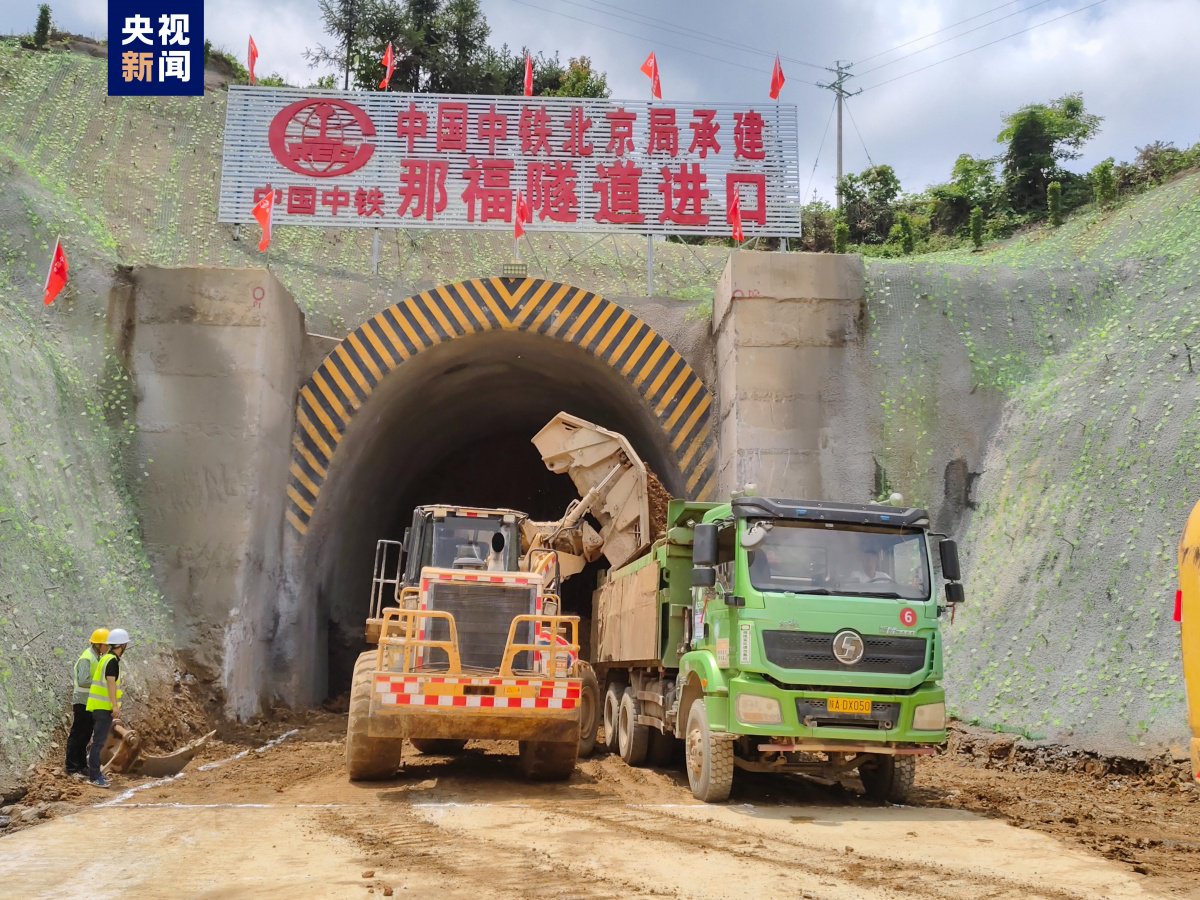The Huangbai Railway, which spans Guizhou and Guangxi provinces, connects the Nanning-Kunming Railway to the south and the Shanghai-Kunming Railway to the north, forming an essential part of the Western Land-Sea New Channel West Passage. Passing through the revolutionary old areas of Baise, as well as ethnic minority areas such as the Miao, Yao, and Buyi, the railway has a total length of approximately 315 kilometers and is designed for a speed of 160 kilometers per hour. It is classified as a Grade I single-track electrified railway.

On May 7th, the tunnel project section of the Guangxi segment of the Huangbai Railway officially entered the construction phase in Lingyun County, Baise City, Guangxi. This marks the comprehensive initiation of the tunnel project section of the Huangbai Railway in Guangxi. The Guangxi section of this railway will include the construction of 33 new tunnels, totaling 109.735 kilometers in length, as well as 33 new bridges, with a total length of 15.974 kilometers. With a bridge-to-tunnel ratio as high as 90.6%, it currently has the highest bridge-to-tunnel ratio among railways in Guangxi.
The first super-large tunnel under construction is the Nafu Tunnel, with a total length of 12,357 meters, making it one of the seven super-large tunnels exceeding 10 kilometers along the entire Huangbai Railway line. The tunnel construction adopts the layout of "2 inclined shafts and 1 level guide," with a total of 7 working faces for construction. Due to the enormous length of the tunnel, ventilation poses a significant challenge, with ventilation distances of around 4 kilometers for five of the working faces.
To ensure construction quality and progress, the construction unit will deploy 375 construction workers and 60 sets of various construction equipment and vehicles. Additionally, through advanced geological forecasting, monitoring, and specialized optimization design, such as rock drilling cars, hydraulic arch stackers, and automatic pouring of the second lining, the construction level of mechanization and automation has been improved, enhancing construction efficiency and ensuring smooth tunneling.
The completion of the Huangbai Railway will play a vital role in the layout of the regional railway network, especially for the freight transport corridor from Sichuan-Chongqing-Guizhou to the Beibu Gulf Port, providing the shortest, optimal, and fastest transportation route and significantly promoting regional economic and social development.
The completion of the Huangbai Railway will also serve as a convenient route from northern Guizhou to the northern Beibu Gulf region of Guangxi, accelerating the construction of the Western Land-Sea New Channel and promoting the coordinated development of the regional economy and society, which is of great significance.
